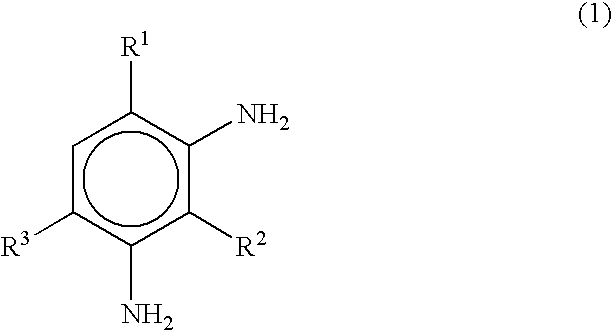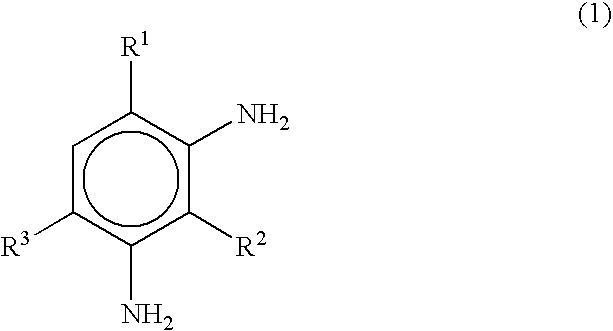Epoxy resin composition and fiber reinforced composite material using epoxy resin composition
a technology of epoxy resin and composite material, applied in the direction of synthetic resin layered products, transportation and packaging, chemistry apparatus and processes, etc., can solve the problems of considerable care in handling of compositions, and achieve the effects of low viscosity, good stability and easy handling
- Summary
- Abstract
- Description
- Claims
- Application Information
AI Technical Summary
Benefits of technology
Problems solved by technology
Method used
Image
Examples
examples
[0030] As follows is a description of specific examples of epoxy resin compositions of the present invention, as well as fiber reinforced composite materials which use these epoxy resin compositions.
[0031] The test methods used for determining the physical properties of the epoxy resin compositions and the cured products of these epoxy resin compositions are described below.
[Evaluation of Uncured Epoxy Resin Compositions]
Viscosity Measurements
[0032] Apparatus: RDA-700 manufactured by Rheometrics Ltd. [0033] Measurement conditions: Disk Plate 25 mm φ[0034] Gap 0.5 mm [0035] Rate 10 rad / sec [0036] Measurement temperature 25° C.
Evaluation of Viscosity Stability for Uncured Epoxy Resin Compositions
[0037] The isothermal viscosity at 25° C. was measured using the viscosity measurement method described above, and the sample was observed to determine whether a viscosity of no more than 1000 mPa·s could be sustained for at least two hours. For those resin compositions for which this ...
examples 1 to 5
[0056] Epoxy resin compositions were prepared with the relative compositions shown in Table 1 below. The numbers in Table 1 refer to parts by weight. The viscosity of each epoxy resin composition at 25° C., and the viscosity stability thereof, together with the results of bending tests (elastic modulus, strength, breaking elongation) and measurements of Tg and KIC on the cured product of each epoxy resin composition are shown in Table 2.
[0057] The curing conditions used in converting each of the epoxy resin compositions of the examples 1 to 4 into a cured product involved heating each composition for two hours at 180° C., whereas the curing conditions used in converting the epoxy resin composition of the example 5 into a cured product involved heating the composition for three hours at 180° C.
examples 6 to 11
[0075] Epoxy resin compositions were prepared with the relative compositions shown in Table 3 below. The numbers in Table 3 refer to parts by weight. The viscosity of each epoxy resin composition at 25° C., and the viscosity stability thereof, together with the results of bending tests (elastic modulus, strength, breaking elongation) and measurements of Tg and KIC on the cured product of each epoxy resin composition are shown in Table 4.
[0076] The curing conditions used in converting each of the epoxy resin compositions of the examples 6 to 11 into a cured product involved heating each composition for two hours at 180° C.
PUM
| Property | Measurement | Unit |
|---|---|---|
| viscosity | aaaaa | aaaaa |
| viscosity | aaaaa | aaaaa |
| breaking elongation | aaaaa | aaaaa |
Abstract
Description
Claims
Application Information
 Login to View More
Login to View More - R&D
- Intellectual Property
- Life Sciences
- Materials
- Tech Scout
- Unparalleled Data Quality
- Higher Quality Content
- 60% Fewer Hallucinations
Browse by: Latest US Patents, China's latest patents, Technical Efficacy Thesaurus, Application Domain, Technology Topic, Popular Technical Reports.
© 2025 PatSnap. All rights reserved.Legal|Privacy policy|Modern Slavery Act Transparency Statement|Sitemap|About US| Contact US: help@patsnap.com


